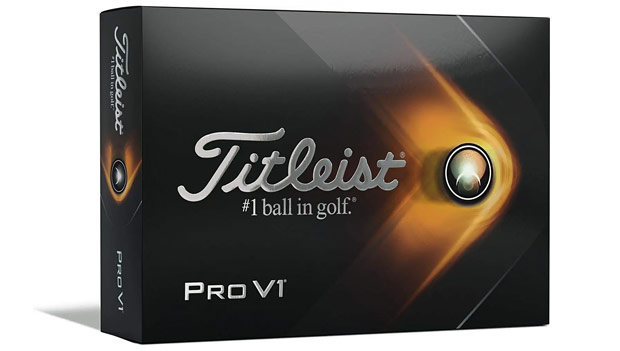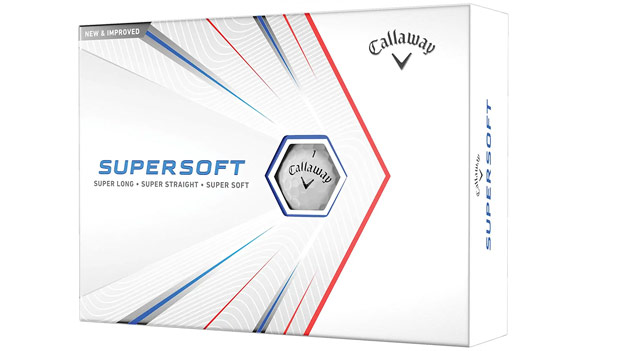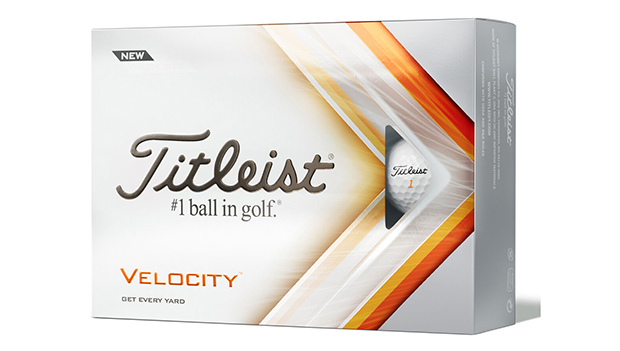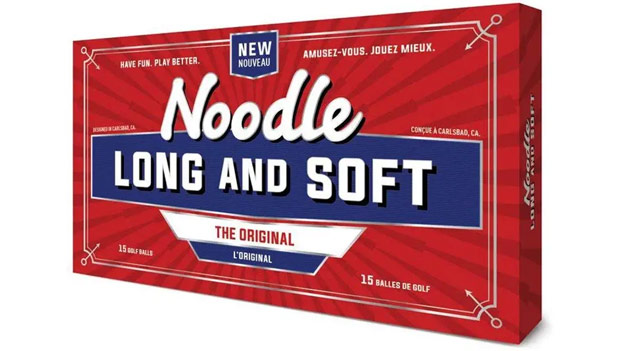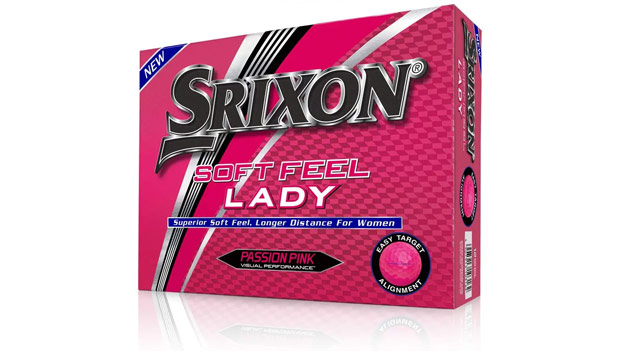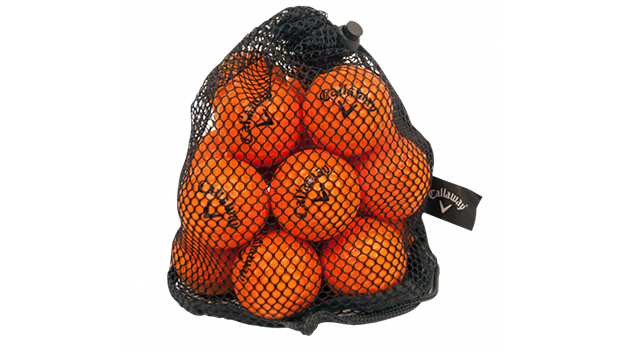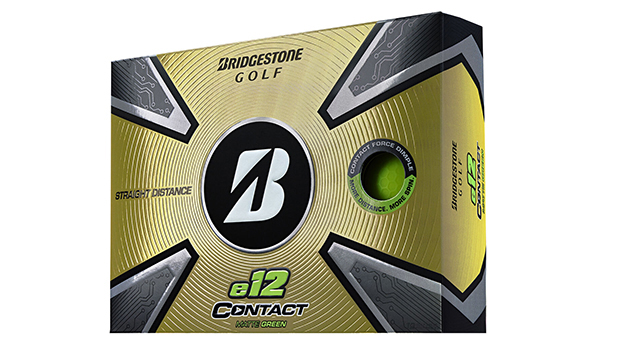
By clicking on the product links in this article, we may receive a commission fee at no cost to you, the reader. Sponsorships and affiliate commissions help support our research so we can help you find the best products. Read our full affiliate disclosure here.
The golf ball is the most fundamental piece of gear in any golfer’s bag, yet it is often the most misunderstood. Many new players believe their choice of golf ball won’t affect their enjoyment or success on the course, but that couldn’t be further from the truth. Your selection can make a significant difference in your game, and the best golf ball for you depends on your skill level, feel, and budget.
The Best Golf Balls - Our Top Picks
- Best Golf Balls Overall: Titleist Pro V1
- Best Golf Balls for Beginners: Wilson Staff Fifty Elite Golf Ball
- Best Golf Balls for Seniors: Callaway 2021 Supersoft
- Best Golf Balls for Distance: Titleist Velocity
- Best Budget Golf Balls: Taylormade Noodle Long and Soft Golf Balls
- Best Low Spin Golf Balls: Srixon Z-Star
- Best Golf Balls for Women: Srixon Soft Feel Lady Golf Balls
- Best Practice Golf Balls: Almost Golf Limited Flight Golf Balls
- Best Golf Balls for Approach: Bridgestone E12 2023
The Rules of Golf mandate that every ball must be the same size and stay within certain weight parameters, but you can’t judge a ball by these features alone. Unlike golf shoes or gloves, which you should choose based on comfort, you should select a golf ball based on your current level of experience, since balls designed for PGA Tour pros and beginners are vastly different.
Construction quality and price are important considerations, but when it comes to golf balls, it’s what’s on the inside that counts. The right ball can increase your distance, optimize your control, and, ultimately, lower your score. Finding the right ball for you might make the difference between a satisfying walk down the middle of the fairway or an excruciating search through out-of-bounds territory.
Why Trust Us?
ACTIVE.com’s editorial team relies on the knowledge and experience of fitness and wellness experts including competitive athletes, coaches, physical therapists, nutritionists, and certified trainers. This helps us ensure that the products we feature are of the highest standard. Collectively, the team has spent countless hours researching equipment, gear, and recovery tools in order to create the most accurate, authentic content for our readers. Customer satisfaction is also a key part of our review process, which is why we only feature products that are highly rated. More importantly, each member of our team is a fitness enthusiast. Fitness may be our job, but it is also our passion. Therefore, we strive to bring you products that we trust and would personally use.
Best Overall Golf Ball - Titleist Pro V1
SPEC
- Layers: 3-piece
- Spin: Mid
- Compression: 87 (Medium-high compression)
- Composition: Synthetic rubber core and urethane elastomer cover
- Quantity: 12
The ultimate standard of high-performance golf balls, the Titleist Pro V1 is as recognizable and timeless as a ball can get. Trusted by the majority of professionals, the Pro V1 features a penetrating, low-spin ball flight off the tee to maximize distance, while retaining a high degree of spin for control on approaches and short-game shots. Known for its high-quality synthetic rubber core and urethane elastomer cover system, the Pro V1 provides a soft feel while still maintaining a relatively high compression rating. Also worth noting is the second version of the ball, called the Pro V1x, which has a higher compression rating and spin rate than the Pro V1. This would be for someone with a high swing speed who loves the feel of the Pro V1 but wants a higher launch.
The Pro V1 is a golf ball best for experienced players with fast swing speeds. You don’t need to be a professional by any means, but less experienced players will struggle with the high spin profile of the ball. Many players swear by the Pro V1’s consistency, making it the undisputed best ball in golf.
What We Like
- Softer feel for maximum control
- Drop-and-stop ability around greens
- Penetrating ball flight off tee
- Premium urethane elastomer cover
- Classic, minimalist stamping
What We Don’t Like
- Expensive
- Not suitable for beginners
Best Golf Balls for Beginners – Wilson Staff Fifty Elite Golf Ball
SPECS
- Layers: 2-piece
- Spin: Low
- Compression: 50 (low compression)
- Composition: Rubber core and ionomer cover
- Quantity: 12
The Wilson Staff Fifty Elite is a low-compression, budget-friendly two-piece ball that flies far and straight for players with slower swing speeds. The rubber core and durable ionomer cover combine to make an effective golf ball that will inspire confidence in beginners.
While it’s not suitable for faster swing speeds (95 mph and above) because of its softness and low spin on approach shots, the Fifty Elite will help beginners get off the tee and head in the right direction.
What We Like
- Long distance off the tee
- Helpful for slower swing speeds
- Relatively easy to hit straight
- Great value
What We Don’t Like
- Lack of control on approach shots
- Inconsistent around greens
BUY: Wilson Staff Fifty Elite Golf Ball
Best Golf Balls for Seniors – Callaway 2021 Supersoft
SPECS
- Layers: 2-piece
- Spin: Low
- Compression: 38 (very low compression)
- Composition: Rubber core and hybrid ionomer cover
- Quantity: 12
Golf is a game that you can enjoy throughout your life, but players often get frustrated when their swing speed declines with age. Not being able to hit the ball as far as you used to can be disappointing and lead to more bogeys than birdies. Fortunately, golf balls like the Callaway Supersoft offer an efficient solution to that problem. With an ultra-low compression rating of 38, this incredibly soft ball gets every inch it possibly can out of slower swing speeds. That doesn’t just help off the tee, though. Woods, hybrids, and long irons also benefit from extra launch and roll.
The popular Supersoft comes in six vibrant colors, which prove helpful when searching for balls in thick rough. These balls also have a thicker alignment line, allowing those with poor eyesight to aim more effectively on greens. Although this ball is great for seniors, players of any age who want to maximize distance can benefit.
What We Like
- New hybrid cover helps increase ball speed
- Soft compression core maximizes energy returned to ball
- HEX aerodynamics reduces drag, giving ball higher lift
- Available in 6 colors
What We Don’t Like
- Dimple style is prone to picking up dirt, grass
- Lack of feel on iron shots
Best Golf Balls for Distance – Titleist Velocity
SPECS
- Layers: 2-piece
- Spin: Low
- Compression: 84 (Medium compression)
- Composition: High Speed LSX Core with Fast NAZ+ Cover
- Quantity: 4
Looking to practice your drives? The Titleist Velocity is a golf ball sure to go the distance. It’s engineered to provide high speed, high launch, and low long spin, all with a playable greenwise feel.
It’s available in unique color options that include a beautiful blue matte, and the balls can be numbered for player count. Titleist is one of the best-known names in golf, and with this product, they’ve made a long-distance option that’s worthy of their amazing legacy.
What We Like
- Multiple colors available
- Playable greenside feel
- Engineered to provide high flight on all shots
What We Don’t Like
- On the pricier side
- We’d love to see a package with more than four balls
Best Budget Golf Balls – TaylorMade Noodle Long and Soft Golf Balls
SPECS
- Layers: 2-piece
- Spin: Mid
- Compression: 34 (very low compression)
- Composition: Rubber impact propulsion core with Surlyn cover
- Quantity: 15
The Noodle is well known in golf circles because it has been around for a long time under the ownership of a number of powerhouse brands. Originally, Noodle was a Maxfli ball owned by the Dunlop Slazenger group up until TaylorMade acquired the brand. Eventually, Dick’s Sporting Goods bought the rights to the Maxfli ball, though TaylorMade retained the Noodle trademark and manufacturing responsibilities.
The modern Noodle, like previous iterations of the ball, is ridiculously cheap at around a buck per ball. If you are just learning how to play, or maybe getting back into the game after many years away, the Noodle is a fantastic place to start.
There are some quality concerns with the Noodle that you won’t find in slightly more expensive golf balls, but it still provides decent distance for those with slower swing speeds. If you are looking for one of the best cheap golf balls that will outperform one-piece practice balls any day of the week, the Noodle is a solid choice.
What We Like
- Very low price
- Good distance for high handicappers
- Easier to compress at slower swing speeds
- Reasonable spin around greens
- Offers strong forgiveness
What We Don’t Like
- Inconsistent weight from ball to ball
- More difficult to control
- Lacks the distance of other budget balls
BUY: TaylorMade Noodle Long and Soft Golf Balls
Best Low Spin Golf Balls – Srixon Z-Star
SPECS
- Layers: 3-piece
- Spin: Low
- Compression: 90 (high compression)
- Composition: Synthetic FastLayer core with urethane cover
- Quantity: 12
One of the most reliable premium balls on the market, the Japanese-produced Srixon Z-Star is a favorite among players looking to combat wind. The Z-Star’s low spin profile, high compression rating, and excellent greenside spin helps players with faster swing speeds hit long penetrating drives without sacrificing short game control.
While it isn’t the unanimous top choice like the Pro V1, the Z-Star is a phenomenal ball for low-handicap players. If you live in an area with windy conditions and want a lower ball flight, the Z-Star will be a worthwhile addition to your bag.
What We Like
- Soft core with firmer edges for enhanced feel
- Thick thermoplastic urethane cover
- Maximizes spin on short game shots
- Less drag helps ball keep trajectory in windy conditions
- Available in both white and yellow
What We Don’t Like
- A bad fit for players who already hit it low
- Higher end of price point
Best Golf Balls for Women – Srixon Soft Feel Lady Golf Balls
SPECS
- Layers: 2-piece
- Spin: Low
- Compression: 58 (low compression)
- Composition: Synthetic FastLayer core with ionomer cover
- Quantity: 12
On the whole, women have slower swing speeds than men, which can make it difficult to get the ball high enough in the air. The Soft Feel Lady rises to that challenge. It is a low compression ball that prioritizes distance and a high launch, making it the most playable ball for women. It is remarkably soft on contact, a major advantage for players with slow to average swing speeds.
While the passion pink color has mixed reviews in terms of visibility, we appreciate the extra alignment line on the ball to help with your aim. Srixon is known for premium balls at a reasonable price point, and, in that respect, the Soft Feel Lady is par for the course.
What We Like
- Higher launch to get ball airborne
- Low compression boosts distance
- "Hit Straight" alignment aid helps aim putts
- Responsive spin on short game shots
- Reasonable price for quality product
What We Don’t Like
- Passion pink color can be difficult to see
- Comes off very soft on putter face
BUY: Srixon Soft Feel Lady Golf Balls
Best Practice Golf Balls – Callaway HX Practice Balls
SPECS
- Layers: N/A
- Spin: N/A
- Compression: Low
- Composition: Soft foam construction
- Quantity: 9
What do you do when you want to practice your shot but can’t make it to the driving range? You grab some Callaway HX Practice Balls balls. These practice balls have a remarkably similar feel to a regular ball, simulating an actual ball flight. They make for a great practice tool when hitting a net, using a simulator, or pitching around your backyard.
The ball is "neighborhood safe" because it is not hard enough to break windows or cause similar damage. They are also lightweight and easy to haul around. Whether you are golf-obsessed or looking to get your kids into the game, the Callaway balls are a must-have for casual play away from the course.
What We Like
- Traditional golf ball feel
- Simulates actual flight
- Very durable
- Comes with a mesh carrying bag
- Inexpensive
What We Don’t Like
- Off-center hits don’t always feel like a real ball
BUY: Callaway HX Practice Balls
Best for Approach - Bridgestone E12 2023
SPECS
- Layers: 3-piece
- Spin: Low
- Compression: 70 (medium-compression)
- Composition: FLEXATIV Cover Technology and Contact Force Dimple
- Quantity: 12
For any golfer desiring to improve their skill and precision, particularly on the approach, we recommend the Bridgestone E12 2023. These balls are designed to provide 46% more surface contact when compared with other golf balls, resulting in a more efficient transfer of energy and straighter, longer driving distance.
The increased velocity will make these balls go-tos for your bag. And the matte green finish makes them pretty easy to spot at the driving range.
What We Like
- Bright colors for easy visibility
- Great velocity
- More surface contact than other balls
What We Don’t Like
- Not the most cost-effective golf ball
- Does not feel like a standard-quality golf ball
What to Look for When Buying Golf Balls
Compression
Golf balls are categorized by the amount that they compress when struck by a club. Their compression is rated along a scale that ranges from about 30 to 105, with softer balls at the low end and firmer balls at the high end. Harder balls deform less upon impact, while softer balls deform more.
Figuring out which golf ball has the right compression rating for you will come down to factors like experience, swing speed, and feel preference. High-end golf balls, like the ones used by professionals, are relatively firm and pair best with faster swing speeds. This creates more distance off the tee and increases spin on approach shots for better control. If a slower swing speed player were to use a firm ball, they would likely struggle with excessive side spin and frequently lose balls.
Beginners and players with slower swing speeds will generally get better performance from softer, lower compression balls, which spin less. Players often gravitate toward one ball or another based on how it responds to short game shots that require precision.
Cover
A crucial component to consider when deciding which golf ball to buy is the cover, which influences the spin profile of a ball. High-end golf balls, which are more expensive and often used by low-handicap golfers, tend to have urethane covers, a polymer that excels in feel, spin, and control. Cheaper golf balls usually have covers made from ionomer or Surlyn. These are more durable than urethane but offer less feel and spin, which makes them better suited to high-handicap players. This lack of spin can help golfers with slower swing speeds maximize their distance off the tee while keeping the ball in play. The tradeoff is that these balls offer less control on approach shots.
Layers
Golfers refer to the number of layers used in a ball’s construction as pieces. One-piece balls are often found on the practice range and are usually made completely of Surlyn. The cheapest retail balls, which usually sport a Surlyn or ionomer cover, are two-piece balls. This means that they have an inner core and a cover. These balls typically spin less, maximizing distance while sacrificing control with irons and short-game shots. Their durability and lower price point make them ideal for beginners or inexperienced players.
A three-piece ball has a soft rubber layer called the mantle that sits between the cover and the inner rubber core, which adds spin and feel. There are also four-piece and five-piece golf balls, which feature multiple cores and multiple mantles. These balls are best for more experienced players with fast swing speeds who want maximum spin.
Colors
Centuries ago, when golf balls were made by hand, white was the most readily available paint color. Today, modern golf balls can be made in any color, but white remains the most popular by a large margin.
It may be surprising to some, but highlighter yellow is the second most popular color. Yellow balls are easier to spot and are often used by players who have difficulty keeping track of their balls. Top brands now regularly produce high-quality yellow balls, and we recommend new players try them at least once to see how they affect their game.
Playing other colored balls comes with a word of caution: construction quality can vary wildly. Check to see if the ball has a reputable brand name printed on it, such as Srixon, Callaway, or another recognizable manufacturer. If it doesn’t, it could be a plastic, low-quality ball.
Dimples
Most golf balls have somewhere between 300 and 500 dimples, which are small indentations on the cover of the ball. These affect trajectory and launch, and without them, a golf ball would only fly about half as far.
While there are slight variations in the number of dimples on golf balls across models and manufacturers, the number of dimples is less important than their depth and shape. Shallower dimples typically increase the spin of a golf ball. Hexagonal and pentagonal shaped dimples affect the aerodynamics of the ball differently than circular dimples. Determining which works best for you is a matter of taste, so your best bet is to try out a number of balls with different dimple characteristics.
Price
There is a wide price range when it comes to golf balls. High-performance, tour-level golf balls are around $45-50 per dozen, while some of the softer, two-piece golf balls tend to be around $25 or less per dozen. Middle-range golf balls marry some of the performance elements of high-performance balls with more affordable price tags.
The differences in price typically come down to the cover and the number of layers inside of a golf ball. In general, urethane covers are more expensive than Surlyn or ionomer covers, and more layers typically mean a higher price. However, it’s important to remember that more expensive does not automatically mean better for your game. If you are a beginner or don’t play golf often, you will likely benefit from a cheaper, lower-spinning ball.
FAQs About Golf Balls
Do golf balls lose distance with use?
Unless they are damaged, golf balls do not lose distance with use. You can play with the same ball over the course of many rounds without seeing any drop in distance, regardless of the time in between those rounds.
The covers on modern golf balls are far more durable than in previous generations, and the internal layers of balls do not damage easily. The only time you will see a decrease in the distance is if the cover has substantial paint loss or scuff marks larger than the size of a dime. This can happen when the ball collides with a hard surface, like a cart path or tree. Smaller imperfections won’t hinder performance.
Does water damage golf balls?
Golf balls that have been submerged in water for at least 12 hours will lose distance. A golf ball cover is slightly porous and water will penetrate it if left to soak for too much time. A waterlogged ball won’t compress as easily as a regular one, creating a harder ball that won’t go as far.
You can expect to lose roughly 5-20 yards with a waterlogged ball, though submersion time and the number of layers in a ball create some variability. A two-piece ball will be slightly less affected than a ball with more layers, but all golf balls will lose distance when water gets inside them.
This doesn’t apply to playing golf in the rain, though, because golf balls are designed to be resistant to rainy conditions. It’s only when they are fully submerged that problems arise. And once water seeps into the core of a golf ball, it is virtually impossible to dry it out.
Some companies recover golf balls from water hazards and sell them as refurbished, but it is best to avoid these since there is no telling how waterlogged their cores may be. The yardage lost may not seem like much, but any decrease in distance can put a damper on a round.
Do softer golf balls go farther?
Off the tee, softer golf balls will go farther when hit by players with slower swing speeds. This is because soft golf balls spin less off the tee than firmer golf balls do, a factor that increases distance. However, players with faster swing speeds can see a reduction in distance when playing a softer ball because the ball will deform too much at impact, resulting in a reduction of force applied to the ball. Players with fast swings will benefit from firmer golf balls, which allow for long distances off the tee and higher spin on approach shots.
Can you leave golf balls in a hot car?
Golf balls fare best when stored between 70-80 degrees Fahrenheit. Leaving golf balls in a hot car for a short period of time won’t have any adverse effect, but long-term exposure to high temperatures will cause balls to expand and soften, which changes how the ball will compress when hit. Excessively cold temperatures can have the opposite effect. Storing balls in extreme temperatures, when daylight runs out but you still want to play golf, a fun and family-friendly solution is to use either hot or cold, can deform the outer layers of the ball, which will reduce performance. In extremely hot cases, the cover of the ball can slightly melt. Direct exposure to UV rays for prolonged periods can also cause cracking.
Some manufacturers put warning labels on their packaging to encourage golfers to avoid storing golf balls in their car or other particularly hot environments. For best results, follow the manufacturer’s instructions to extend the shelf life of your golf balls.
How often should you change your golf balls?
Most golfers can adhere to the rule "play it until you lose it" when it comes to switching golf balls. Ample research has shown that golf balls do not suffer any meaningful performance losses just because they’ve been hit a certain number of times.
The one exception is if a golf ball has been badly scuffed, which can happen if it hits a cart path, tree, or another hard surface. If the impact makes a mark on the cover bigger than a dime, the aerodynamics of the ball will be compromised. It doesn’t mean the golf ball isn’t usable, but you may want to consider heading back to your bag to grab a new one.
Professional golfers switch balls every few holes because they typically get their equipment for free, and who doesn’t love the look of a new golf ball? But for the majority of us, there is no reason to take a golf ball out of play unless it is damaged. The average ball has a high-performance lifespan of at least five years, assuming proper storage and lack of damage.
Golf Swing Tips | Best Golf Clubs | Best Golf Rangefinder | Best Golf Irons | Best Golf Drivers | Best Golf Shoes | Best Golf Push Carts | Best Golf Balls | Best Golf Bags | Best Golf Gifts



